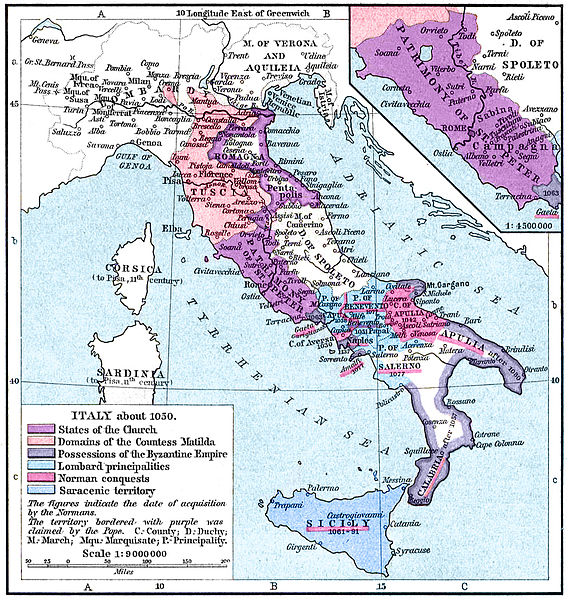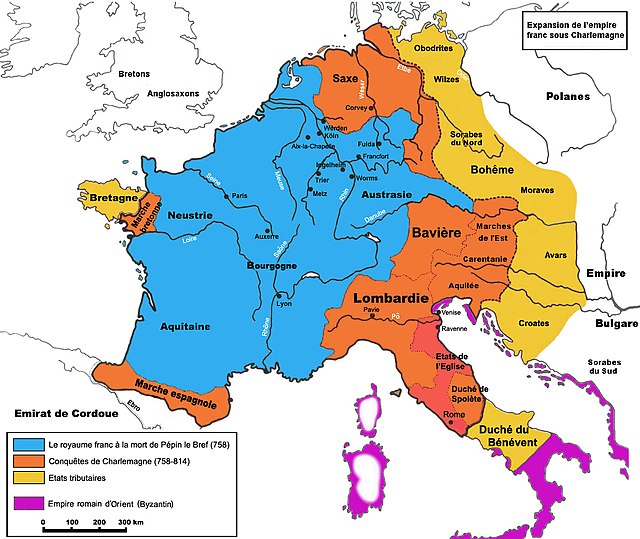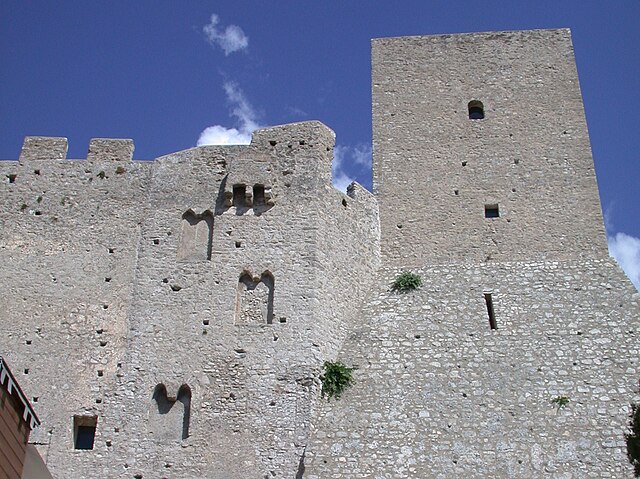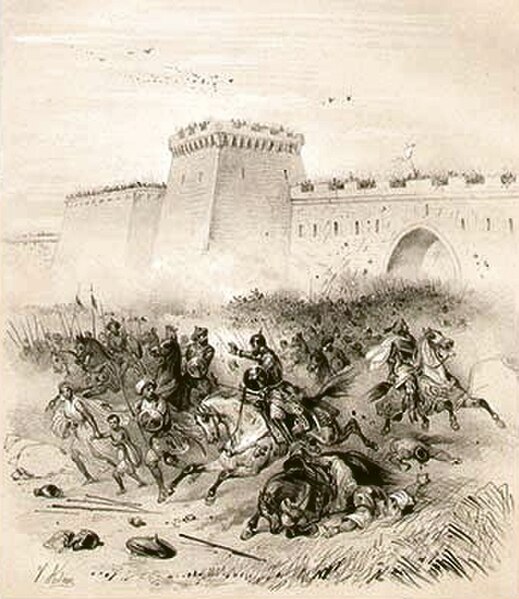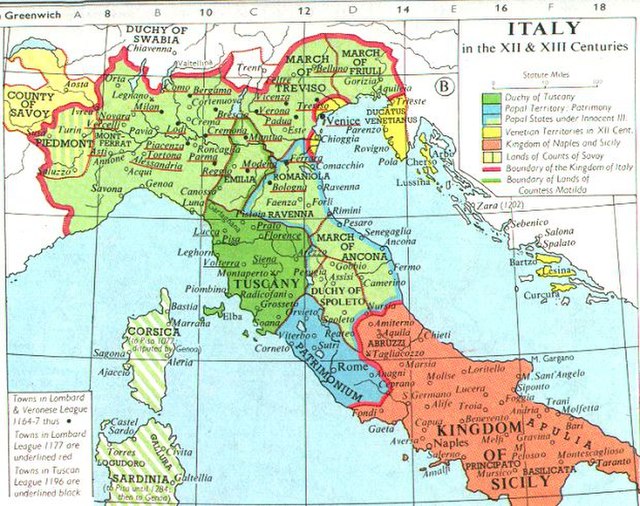Matilda of Tuscany, also referred to as la Gran Contessa, was a member of the House of Canossa in the second half of the eleventh century. Matilda was one of the most important governing figures of the Italian Middle Ages. She reigned in a period of constant battles, political intrigues and Roman Catholic excommunications, and was able to demonstrate an innate and skilled strategic leadership capacity in both military and diplomatic matters.
Matilda of Tuscany and Hugh of Cluny as advocates of Henry IV
Adalbert-Atto of Canossa and his wife Hildegard surrounded by arches, and their sons Rudolph, Geoffrey (Gotofred) and Tedald at their feet. Donizo's Vita Mathildis (Vatican Library, Codex Vat. Lat. 4922, fol. 20v)
The states of the Apennine Peninsula in the second half of the 11th century.
Miniature of Matilda from the frontispiece of Donizo's Vita Mathildis (Vatican Library, Codex Vat. Lat. 4922, fol. 7v.). Matilda is depicted seated. On her right, Donizo is presenting her with a copy of the Vita Mathildis, on her left is a man with a sword (possibly her man-at-arms). The script underneath reads: Mathildis lucens, precor hoc cape cara volumen (Resplendent Matilda, please accept this book, oh you dear one.)
The history of Italy in the Middle Ages can be roughly defined as the time between the collapse of the Western Roman Empire and the Italian Renaissance. Late antiquity in Italy lingered on into the 7th century under the Ostrogothic Kingdom and the Byzantine Empire under the Justinian dynasty, the Byzantine Papacy until the mid 8th century. The "Middle Ages" proper begin as the Byzantine Empire was weakening under the pressure of the Muslim conquests, and most of the Exarchate of Ravenna finally fell under Lombard rule in 751. From this period, former states that were part of the Exarchate and were not conquered by the Lombard Kingdom, such as the Duchy of Naples, became de facto independent states, having less and less interference from the Eastern Roman Empire.
Expansion of the Frankish Empire: Blue = realm of Pippin III in 758, Orange = expansion under Charlemagne until 814, Yellow = marches and dependencies
Castle of Itri, probably dating from Docibilis I's reign.
Louis II at the capture of Bari, 871, from Houze's Atlas Universel Historique et Geographique (1850)
Medieval Kingdom of Italy, outlined in red, in the 12th and 13th centuries



